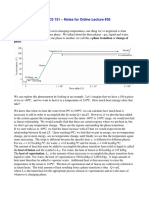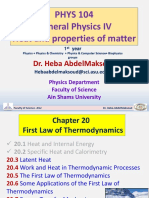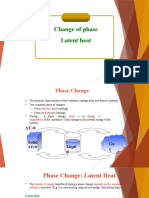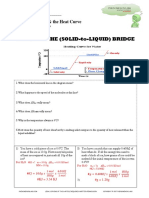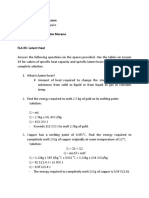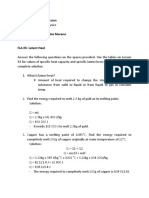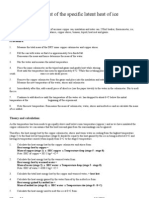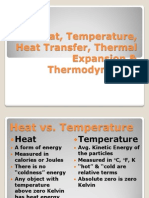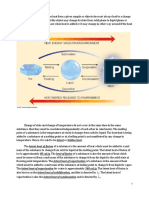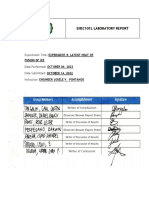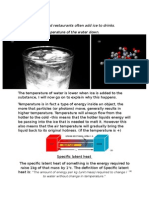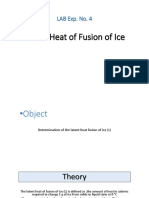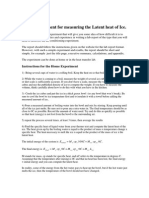DR PHY: 0719988370
Thermal properties of materials
Lesson 4: Specific latent heat of fusion
• Melting – solid is converted to liquid at a constant temperature.
• For a solid substance to melt, heat must be supplied
• The amount of energy required to change state of a 1kg of a substance from solid to liquid
at a constant temperature is called specific latent heat of fusion (lf)
𝑸
𝒍𝒇 =
𝒎
Q- amount of energy supplied in Joules
m- mass of melted solid
• Units of lf are J/kg or J/g
• lf of ice = 334000J/kg or 334J/g
• lf- is also the amount of energy required to weaken the bonds within a solid structure
Consider an ice of 200g at 0oC heated to a temperature of 20oC
A B
o o
Ice @ 0 C Liquid @ 0 C Liquid @ 20oC
• Firstly, the ice will melt ( solid to liquid) at a constant temperature. The amount of energy
required at stage A : Q = mlf
• Then the liquid at 0oC will increase its temperature to 20oC. Since there is a temperature
change then the amount of energy required at stage B: Q = mc∆𝜃
• Total amount of energy absorbed = QA + QB
= mlf + mc∆𝜃
= 200(334) + 200(4.2)(20-0)
= 83 600J
• o o
If the ice is at -5 C heated to 15 C, then the block diagram is shown:
ice @ -5oC ice at 0oC liquid at 0oC liquid at 15oC
Total amount of energy supplied = mc∆𝜃 + mlf + mc∆𝜃
Exercise
1. How much energy is needed to change 3kg of ice at 0oC to water at 0oC ?
2. Calculate the amount of energy required to melt ice from 0oC to 80oC
3. A glass contains 250g of hot tea at 900C. What is the minimum amount of ice needed at
00C to cool the drink to 00C.
Specific latent heat of fusion of ice =336J/g
Specific heat capacity of tea = 4.2J/g0C
@ LN-training the mind to think

